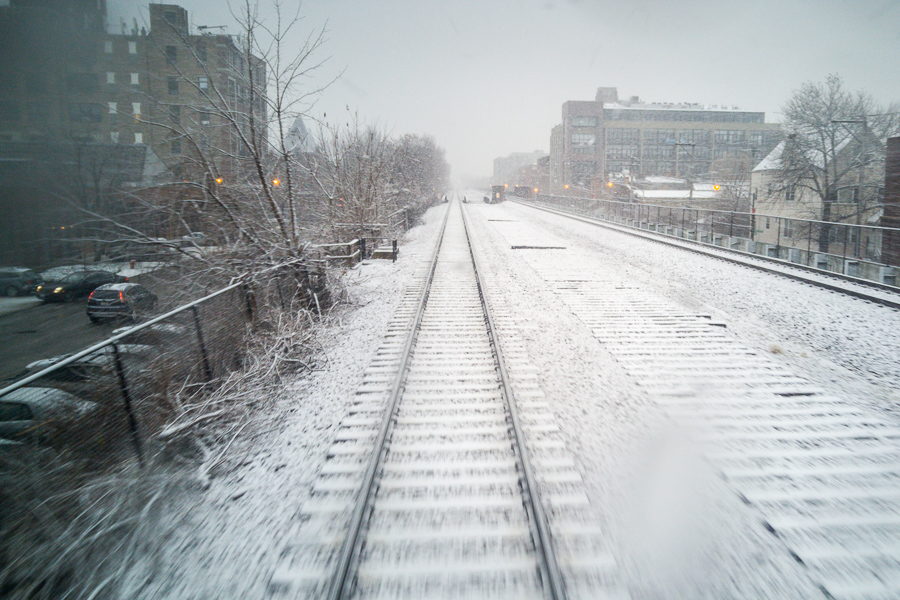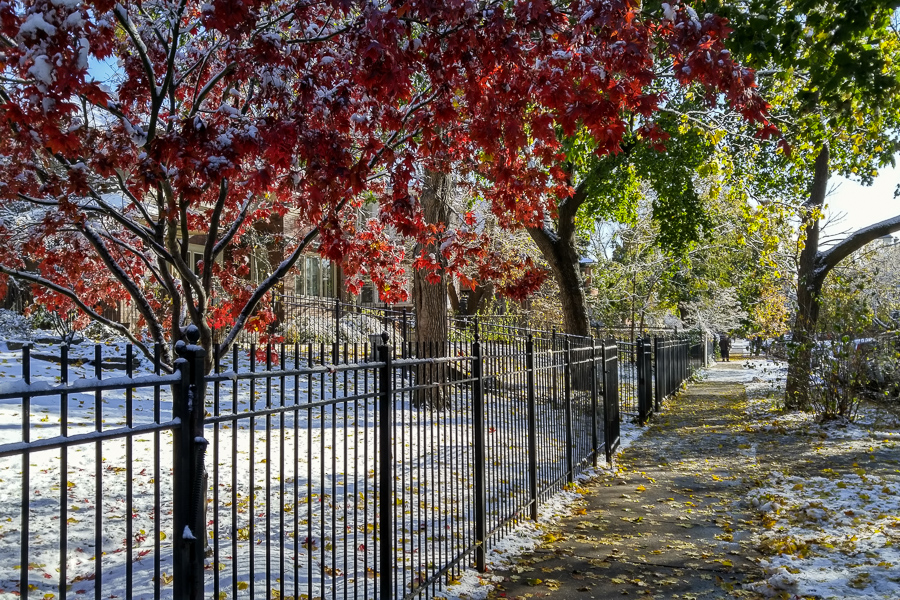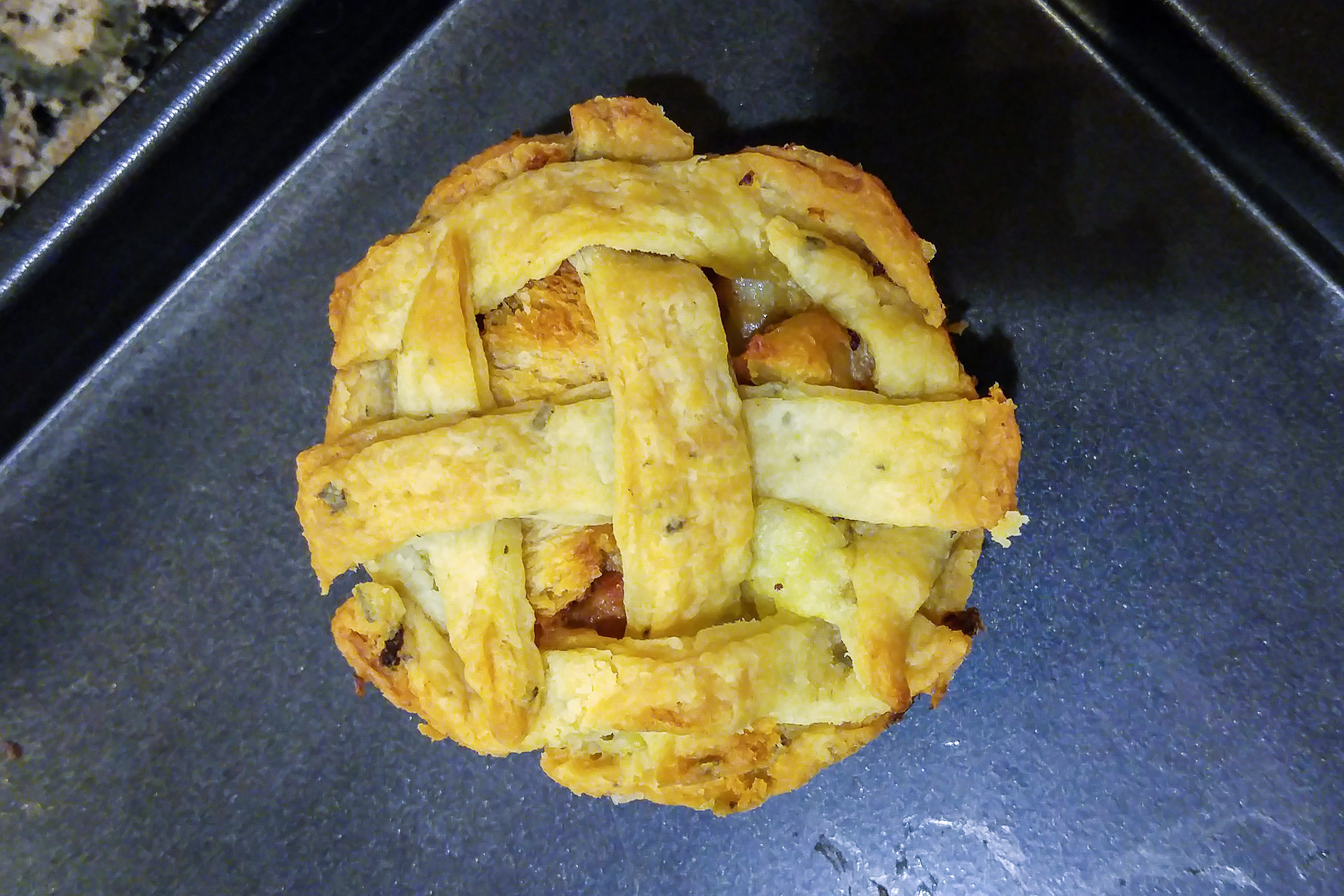Yesterday, Chicago got up to 15°C, not a record but also not what one would expect in December. Our forecast for the next week has the temperature drifting just below freezing Sunday night but otherwise staying above 0°C, which feels a lot more like late March than New Year's Eve.
It's a little unnerving. Don't forget, warm winter means warm lake means warm summer—even without the driving force of El Niño, which may not dissipate before June.
Not that I'm complaining. I'm just...nervous.
Too many things showed up in my RSS feeds this morning. Fortunately, I've got a few days off this weekend and next.
And now, a conference call.
Officially at O'Hare right now it's 15.6°C, down slightly from the 16.1°C recorded earlier. My car says it's 17.5°C. These temperatures would be normal for late April or mid-October.
The forecast calls for temperatures to drop to a more-normal -1°C by next weekend, but after that the CPC forecast calls for a 75-90% probability of above-normal temperatures through March.
Keep in mind, warm winters in Chicago often lead to warm summers, because the lake can't dissipate as much heat as it does in a cold winter. And as we're seeing this year, summer temperatures have little influence on winter temperatures here. So while we're all excited about a warm winter, we need to keep in mind that next summer could be brutal.
Forecasters predicted that this year's El Niño would lead to a warm winter, but they weren't really sure. It looks like it will.
It turns out, Chicago has more revolving doors than any other city in the U.S.:
Angus MacMillan, the national sales manager for Crane Revolving Doors, says Chicago and New York are the biggest markets for revolving doors, and that Chicago was the No. 1 market for decades. He thinks downtown Chicago may have more revolving doors per block than New York: “I get my [sales] reps in from all around the country, and I’ll take them to downtown Chicago, and they’ll count more revolving doors in one block there than they have in their whole city.”
Architect Patrick Loughran of Goettsch Partners says Chicago’s still got a lot of revolving doors because we have so many tall buildings.
“Any high rise building is going to have to have elevator cores that take people from the bottom all the way up,” he says. “Those big open tubes create the stack effect where heat and air rise, and it creates this suction at the base of the building.”
Concerns about the stack effect in highrise buildings only partially explain why the revolving door is so common in the Chicago landscape. Because, if you take a stroll around the Loop, you’ll see contemporary low rise buildings with revolving doors as well: drug stores, restaurants, cafes, and clothing retailers. The likely reason doesn’t have to do with countering the stack effect. According to MacMillan, it comes down to comfort and economics — the need to maximize floor space.
I love WBEZ's Curious City series because of stories like this.
Despite organizing our company holiday party, which was last night, and performing later today at Chicago's Christkindlmarket, I still have to squeeze in some actual work. More interesting blog postings will recommence tomorrow or Sunday.
Crain's has a good description of why the Court denied certiorari on an assault-weapons case but chose to hear an affirmative-action case this term:
The assault-weapons case from Highland Park, Illinois, is a perfect example. The case came to the Supreme Court through the U.S. Court of Appeals for the Seventh Circuit. It raises a substantial and important issue of federal law. That would be enough for justices who think the Illinois law is unconstitutional to grant cert if they really wanted to, as Justice Clarence Thomas made clear in his dissent from the decision to deny.
At the same time, there was a perfectly ordinary bureaucratic reason for the Supreme Court to deny cert: There's no conflict among the different courts of appeal on the legal issues. Several states have similar gun laws, but so far no federal court has struck them down. In October, the Second Circuit upheld bans in New York and Connecticut. And as I noted at the time, the Supreme Court could potentially avoid the issue so long as the appeals courts don't split.
All this brings us to timing: Are the justices affected by something like the San Bernardino attack?
At the margin, there's no question that they can be affected.
Some of the column is speculation, but the author has a good read on Roberts and Kennedy.
This photo from my commute this morning shows why Chicagoans typically keep an extra pair of shoes at the office:

Sunday morning, after Saturday's snowstorm:

Last night, making mini turkey pot pies for tomorrow:

That's all from scratch. Inside a rosemary-sage crust, from the bottom we've got turkey, pinot noir-reduction gravy, stuffing with organic Italian sausage, and cranberry sauce made with cranberries, orange, honey, and a secret ingredient that makes them amazing.
I think I'm going to gain three kilos this weekend.
A couple of articles floated through my awareness today:
Happy reading.